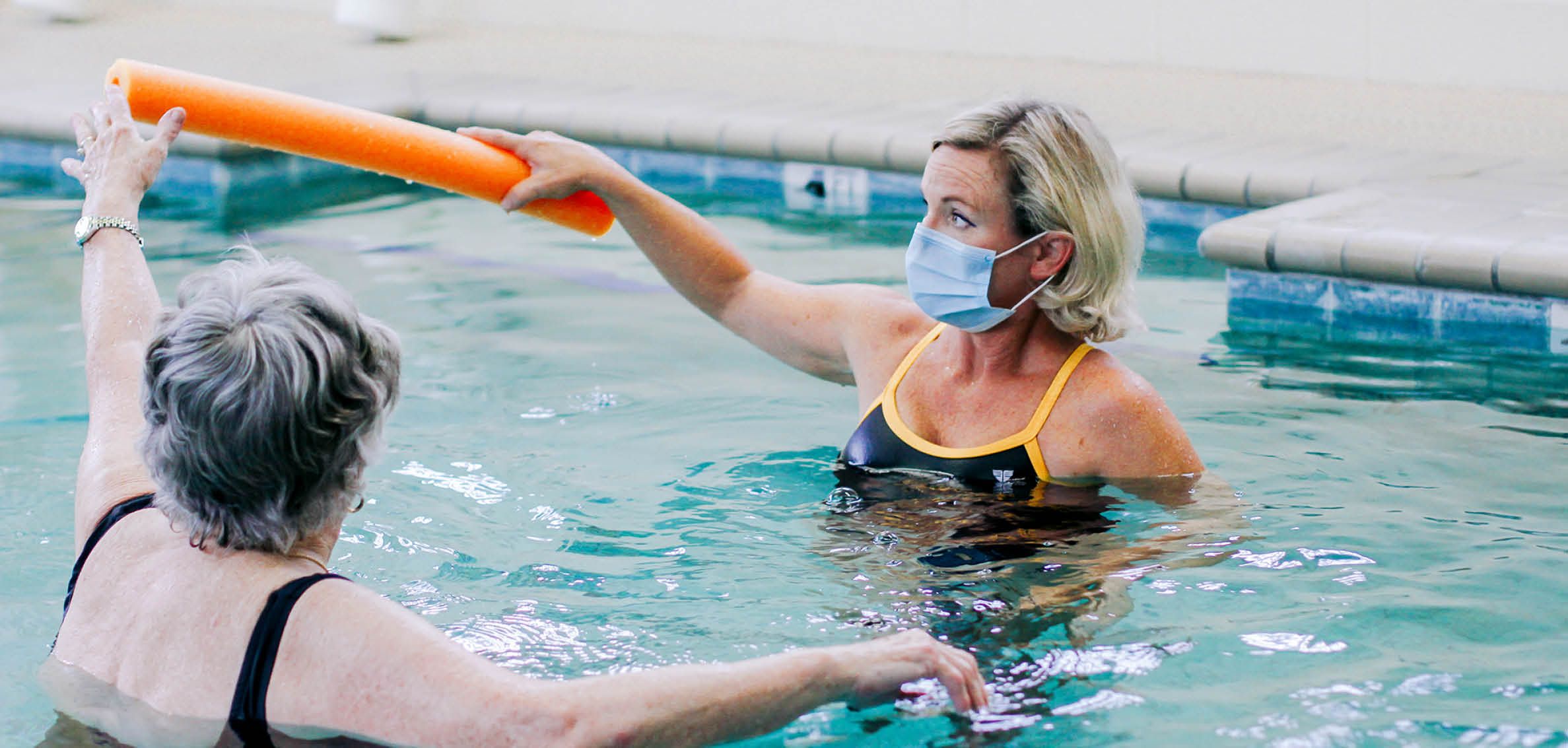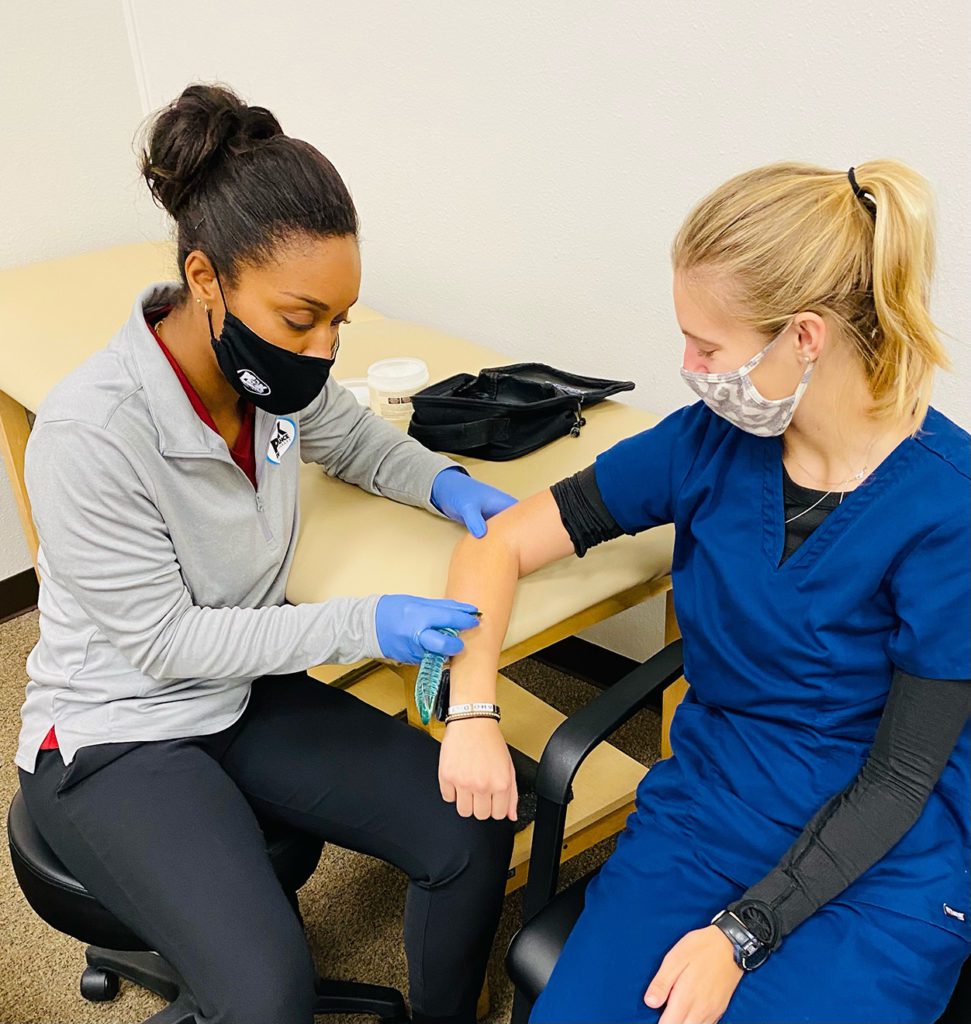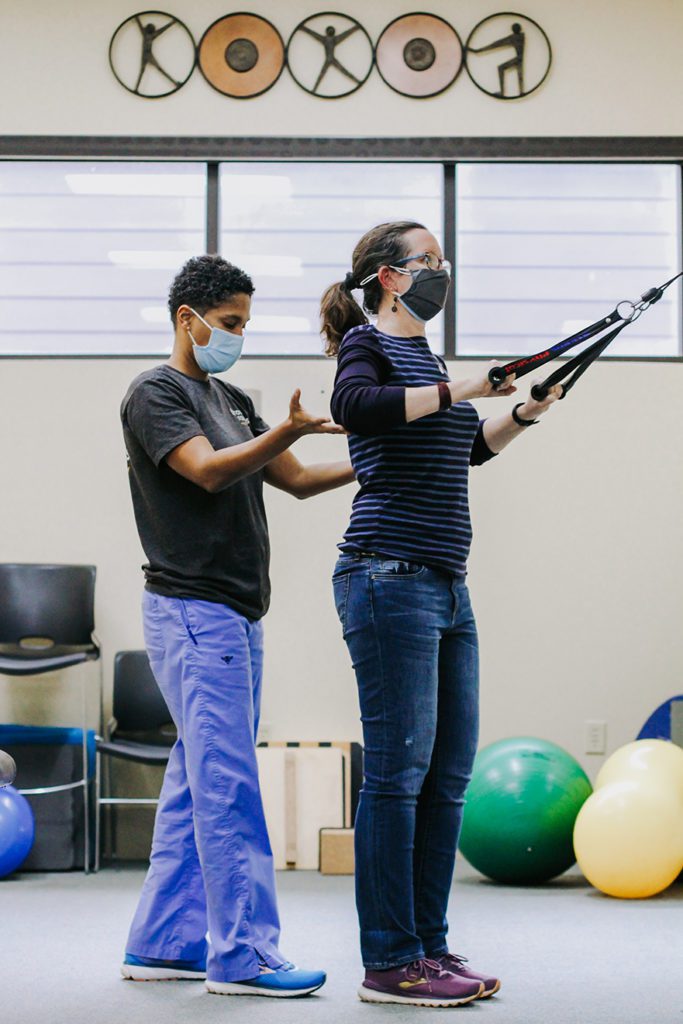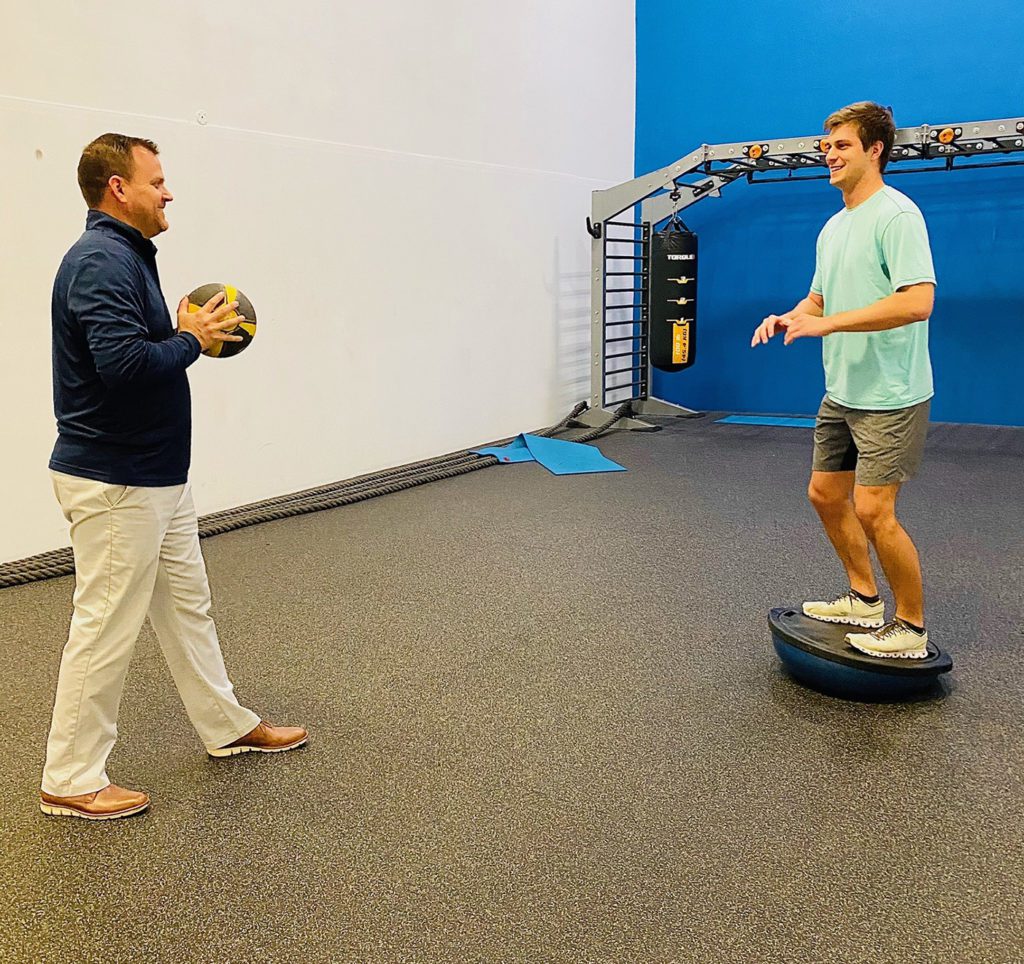
Exercising patience: Though COVID-19’s effects may persist, physical therapists offer focused treatments
Joint pain. Fatigue. Shortness of breath. Those recovering from COVID-19 sometimes experience lingering side effects that can affect their daily quality of life long after they test negative for the virus.
Recovering from COVID-19 can be a challenging experience when no one-size-fits-all recovery road map exists, experts say. “Sometimes the only instruction a patient will get from their physician is ‘Ok, well, let us know how you’re doing or if you have trouble breathing,’” says Angelle Brown, owner of Brown Rogers Physical Therapy and Wellness.
That’s why physical therapy clinics like Brown Rogers are offering personal, targeted therapy sessions for COVID-19 patients who have recovered from the disease but may find themselves weakened, afraid and physically unable to return to their pre-COVID lives.
Peak Performance Physical Therapy is also helping patients who have recovered from COVID-19. “Everyone is learning how to treat the COVID patient,” says Jason Greene, a partner at Peak Performance Physical Therapy, “and that learning is a process.”

Courtesy Peak Performance Physical Therapy
Researchers estimate about 10% of COVID-19 patients become what is known as “long haulers,” according to a recent article from the Journal of the American Medical Association. These long haulers are COVID-19 patients who have gone on to test negative for the virus but still experience symptoms of the infection weeks and even months later. The most commonly reported long-term symptoms include fatigue, shortness of breath, cough, joint pain and chest pain, according to the Centers for Disease Control and Prevention. Other reported long-term symptoms include difficulty with thinking and concentration, depression, muscle pain, headache, intermittent fever and heart palpitations.
Brown says she has seen many of these symptoms in her post-COVID-19 patients. “It’s mostly endurance, posture and generalized de-conditioning, which includes weakness,” says Brown. “Every single patient we have seen has those things.” Trouble breathing deeply and balance problems can also accompany these primary complaints, she notes.
“Really, a major component is the decreased cardiovascular endurance, which affects their ability to do many things,” Greene explains. And Greene should know. He contracted COVID-19 last March and was sick for a month, he says. He experienced all the classic symptoms such as muscle aches and fever as well as night sweats and gastrointestinal issues. Over the course of his illness, Greene developed pneumonia, lost 17 pounds and was on home oxygen. “I think it made me very empathetic for my patients who have had it,” says Greene.
In COVID-19 cases, patients who have been hospitalized or in bed for long periods of time can be become weakened or experience decreased flexibility and mobility when their muscles aren’t used, says Greene.

At Brown Rogers, therapists spend an hour evaluating patients to determine their individualized therapy regimen, Brown explains. The therapist will look at a patient’s balance, posture, body symmetry and endurance. Many patients who have been in bed for long periods of time often have a weaker side of the body or have a changed gait, which can make them worried to do activities they used to do without fear, she says.
Both Greene and Brown say the goal of physical therapy regimens is to get each patient back to the activities they were doing before getting sick or injured.
Small goals are important. Maybe someone is just trying to walk to the end of their driveway to pick up their newspaper in the morning, or get their mail without feeling fatigued, notes Greene. A previously active patient may want to return to the tennis courts for a match once a week.

Greene says his office has mostly seen existing patients who have contracted COVID-19, then returned and had to adjust their physical therapy plan to compensate for new problems related to the virus, such as decreased mobility or flexibility. He has his patients perform functional exercises while being able to control their body weight or timed walking on the treadmill, he says. Exercises like ankle pumps and straight leg raises help prevent blood clotting, he explains.
“I feel like our role in therapy is, when your body is ready, to take what the physician has helped internally in your body get better,” he says. “We’re able to help externally get you back to functioning.”
These personalized exercise programs can include a regimen to safely build endurance, strength, flexibility and balance as well as offer breathing exercises. “We gradually move people up toward getting them back to where they were before having COVID,” Brown says. Cardio exercises on a bike or elliptical machine can help improve endurance, she says.
The Brown Rogers location on Jefferson Highway has an in-ground heated pool, which provides a safe therapy environment for patients with balance issues. In the water, a patient isn’t afraid of falling and will challenge themselves more to complete the exercises, Brown says.
Physical therapy typically lasts a month, with patients coming in two or three times per week. But it can be helpful even for a couple of weeks. “They’re getting over the mental and emotional challenge of that part of recovery, too,” Brown says, “of feeling like they can be themselves again.”











